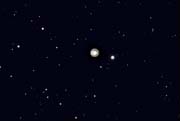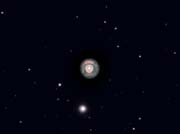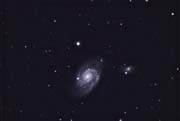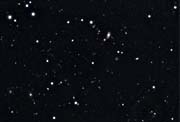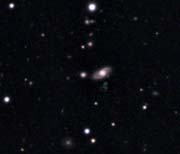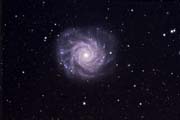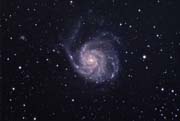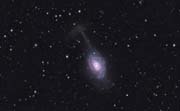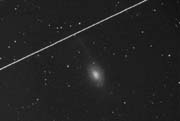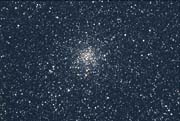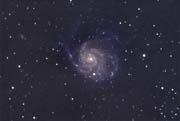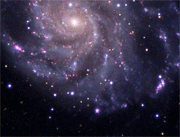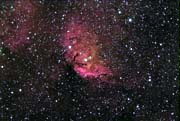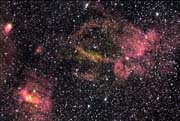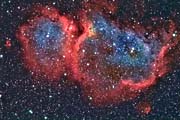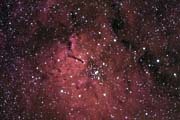|
Alas light nights are fast approaching in April,
particularly at my 55 degree latitude. The end of April is
the last string of full dark nights (and then only for 2 or
3 hours) until the end of August. (Early August only an hour
or so for a handful of nights). So unless the end of the
month has some clear nights, that's the end of faint fuzzies
for me for some time. But the night of 7th April 2011 was
looking pretty good as the early high haze gradually faded.
And I went for a very interesting galaxy, the starburst NGC
3310 (Arp 217) in Ursa Major. Almost at the zenith, so a
good opportunity. Inspired by Adam Block's superb
image, I set to.
OK, I don't have a 32" 'scope, 9000 feet of altitude and
Arizona sky, so can't really compete. But disappointingly
the seeing was only around 5.5 fwhm, and even more
annoyingly before I got any colour data, at 2 am the clouds
rolled in. Scotland got some, there was a big fat one right
over me. But the rest of England, Wales, Ireland, France and
Spain were pristine. I don't beleeve it!!
So I guess it's work in progress until early 2012.
Anyway, here's what I did get. Not worth posting the full
size. There are also some large 'doughnuts' in the image,
possibly due to the bright 5th magnitude star out of frame
at the top of the picture. It was an excellent guide star
for the dual chip camera, but may end up ruining any chance
of a better image.
SBIG ST-10XME with AO-8, 12" LX200ACF at f10 on Gemini
mount. 12 x 15 minute subs.
|
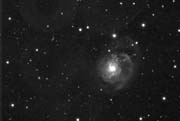
|
|
Added later! Fortunately the weather at the end of April
relented, and over 5 nights I was able to get a lot more
data for this interesting galaxy. Seeing improved, and
although the sky was a little hazy on the night I obtained
the colour frames, it came out ok - the bright starburst
regions shone through the murk! Still slightly 'noisy', but
that's the UK skies for you! The faint blue arc at the top
of the image is definitely down to the bright star (a great
guide star!) out of the frame.
Luminance 12 x 15 minutes + 16 x 20 minutes. RGB each 6 x
10 minutes binned 2x2, optics as above. Full
size
This image appeared in the
Astronomy Now June Facebook gallery
|
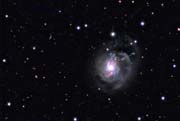
|
